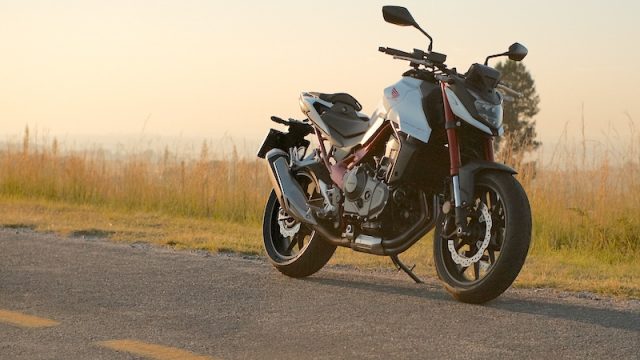Hornet. It’s an old name that recalls some of the greatest pocket rockets and sports standards Honda has ever made. Now, there’s a new CB750 Hornet, with a peachy new engine. Uzair Abdul-Karrim went riding, to see if it still has its sting.
What it is
The Hornet nameplate has been revived, as well as the legendary CB750 designation, and it marks Honda’s latest entry into the middleweight naked sportster segment. This segment has, over the last decade, become defined by the parallel twin, an engine layout once seen as efficient but unexciting. Today, with the introduction of 270-degree crankshafts and uneven firing orders, this has all changed.

The attitude towards the parallel twin has shifted, with both European and Japanese manufacturers fielding mid-level sporty nakeds using this layout, with the Triumph Trident 660 being the only exception in the category, sporting a three cylinder. The CB750 Hornet is the latest to arrive at the parallel party, so how does it stack up?
What it has going on
To begin with, its equipment and specification level is on par with the other bikes in the category, as one would expect of a Honda. It uses a 270-degree crankshaft that pushes out a healthy 67 kW (90 hp) and 75 Nm of torque. It is a light package, weighing in at 190 kg (wet). That weight, coupled with a 795 mm seat height makes this bike extremely accessible to newer, shorter, or maybe just less confident riders. (The confidence thing is a real theme with this bike.)
Brakes and suspension
The suspension and brakes look as good as they perform too. Two radially mounted Nissin four-pots gripping 296 mm discs are up front, whereas a single-piston caliper on a 240 mm disc takes care of rear braking. The rear suspension is a preload-adjustable mono-shock mounted to Honda’s pro-link swingarm.
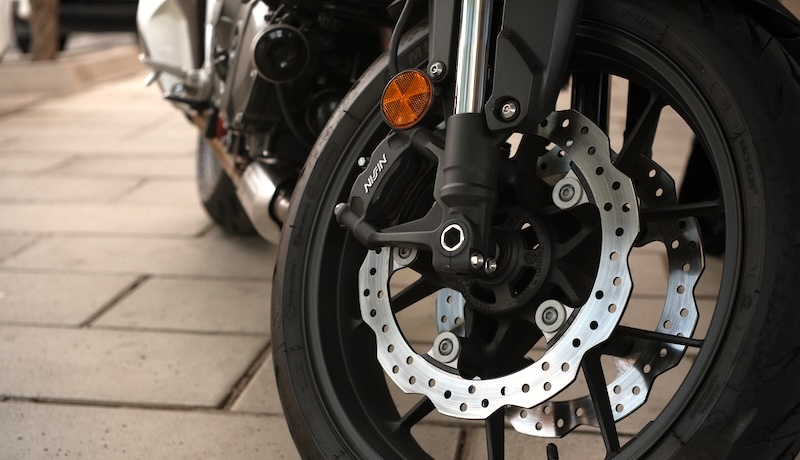
Electronics
The electronics package appears up to date as well, sporting traction control, ABS, and adjustable engine braking. All of this is controlled through the TFT instrument display, which is easy to navigate. There are four riding modes: Sport,Standard, Rain, and User (a custom configuration).
These modes adjust not only engine braking and traction control parameters, but also the amount of power available. Unfortunately, traction control re-engages each time the bike is turned off. Even more annoyingly, it cannot be turned off while on the move.
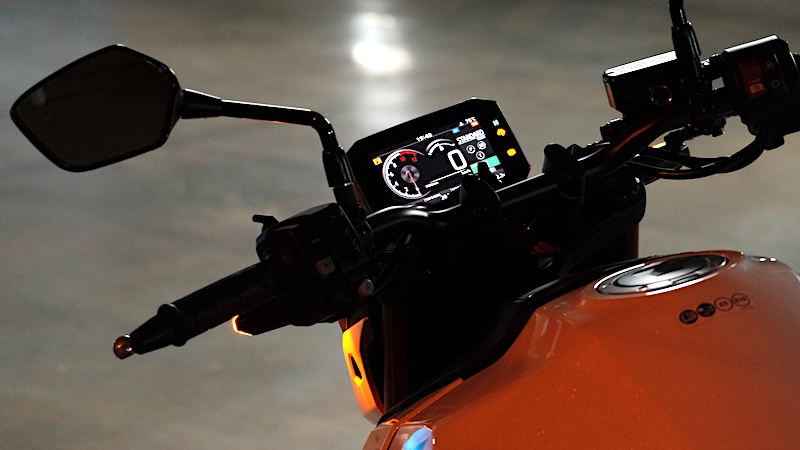
This wouldn’t be an issue if the traction control weren’t so sensitive and restrictive, even in its lowest setting. Minor tech gripe aside, the whole system is intuitive and friendly towards any level of user.
The ride
As with every bike I ride, I enter the test with preconceptions and expectations. Usually, these preconceptions and expectations are not too far from what I experience. This Hornet was much the same for the first few kilometers of riding it. It has a fairly neutral riding position, with a slight sporty canter forward to the bars – enough for control, but still very comfy.
Let’s move to the front. The forks are non-adjustable, 41mm, Showa Big Piston Separate Function Forks. Yes, moreadjustment would have been nice, to accommodate more riders. It is still up to spec with its rivals, though, and in keeping with this class of bike.

Riding lazily, the Hornet obliges, and is every bit the convincing commuter, with phenomenal low-down smoothness from the relatively large twin. The throttle mapping is smooth enough to make navigating parking lots in first gear (without having to feather the clutch) a breeze.
At normal city speeds, the suspension feels plush, and a bit more sophisticated than the specs would suggest, being supportive and still compliant. All of this, I expected.
Jekyll meets Hyde
Once I was comfortable with the bike and its controls and whatnot, I decided to give it the beans to see how it reacts. That was when it revealed a propensity for top-tier hooliganism that I really didn’t expect. I expected it to be fast, and to have an aptitude for cornering. What I didn’t expect, was the way that 755 cc twin comes alive above 6 000 rpm.
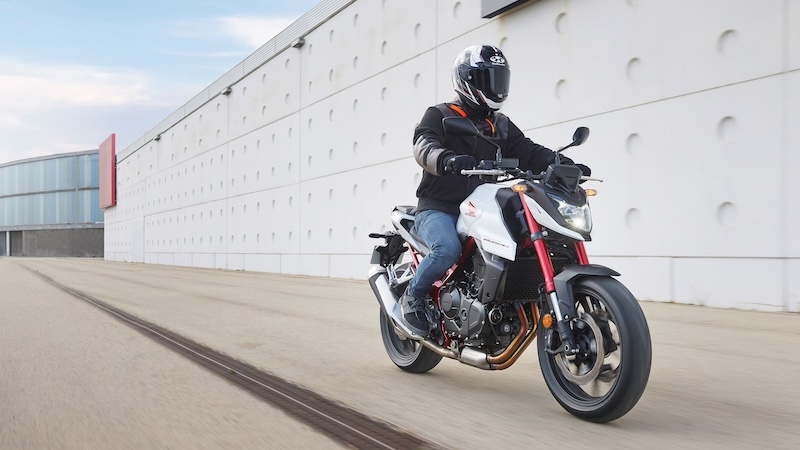
You may be thinking, ‘But it’s only 90 hp!’ But if there’s anything I’ve learned through testing bikes, it’s that numbers can’t dictate how power is delivered. In the Hornet, whatever horses it has it delivers with great enthusiasm. Not to mention that chasing the redline is rewarded not only by rapid forward motion, but with a great, raspy soundtrack too.
Handling
The accelerative properties aside, the Hornet handles beautifully. It has an eagerness to be on the side of the tire, and once there, it is pretty hard to unsettle. With the leverage from the wide bars, weight transfer is effortless. Flicking this bike from side to side feels absolutely natural.
The fueling is smooth, and off/on throttle transitions are seamless, making mid-corner adjustments easy. Best of all, though, is the front end, which gives you the confidence to push it a little bit harder into corners, while letting you feel how hard the front tire is gripping.
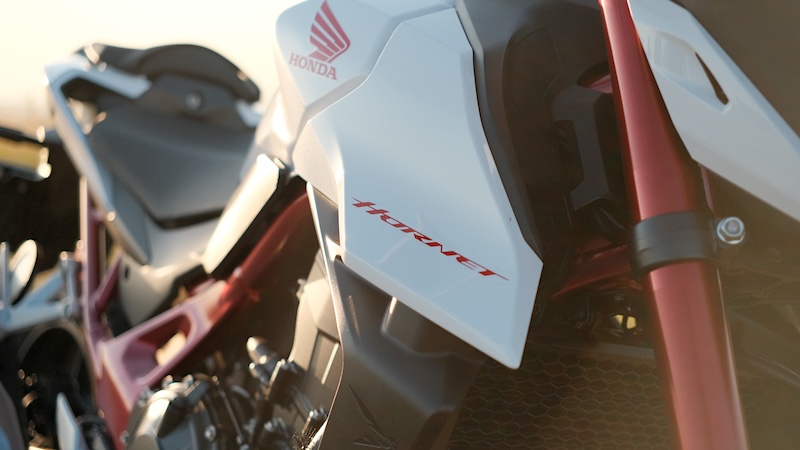
Road-holding
Even under hard braking, the Hornet’s front end was unflappable. It deals confidently with mid-corner bumps or potholes, while the suspension keeps everything safe as well as fun.
Taking it through the twisties changed my perception of this bike. What started as a commuter with sporty pretensions, became a grippy hooligan that just happens to excel at work usually assigned to commuter bikes.
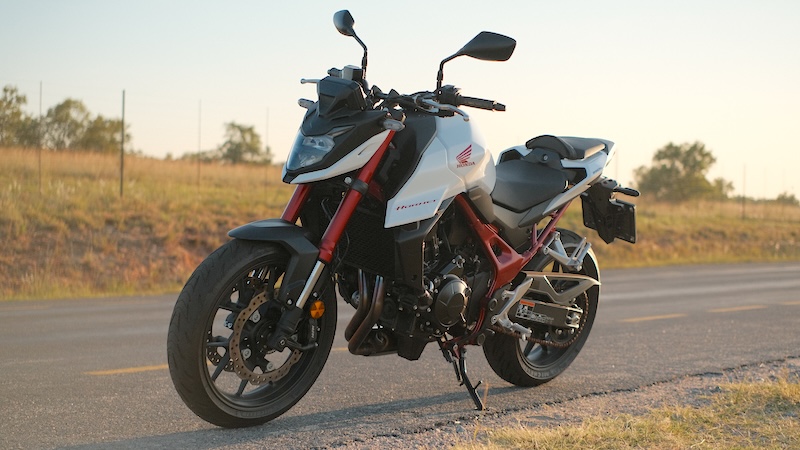
It simply feels as if you can push the engine to its limits without straying into illegal or dangerous territory. I was never left wanting for better damping or more urge, with 90 hp feeling like a perfectly exploitable amount of power.
Room for improvement
If you’re considering a sporty middle-weight naked bike, there is very little to fault the Hornet on. The inability to leave the traction control off, or to switch it off while on the move, was an annoyance. This is especially true considering it’s a sensitive system even at its lowest setting. The unswitchable ABS, especially at the rear, detracts from the Hornets overall hooligan appeal.
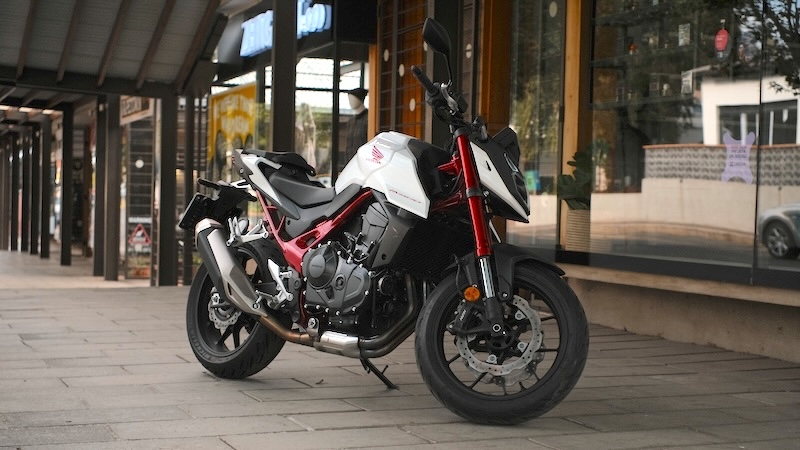
Ergonomically, the Hornet is spot-on, except for the indicator and hooter switch placement. Every time I reached for the hooter, I hit the indicator. Eventually, I had to look down at the handlebars every time I had to indicate, to make sure I didn’t mistakenly hoot. This may be a ‘me’ problem, but this is the first time I’ve had an issue finding the indicator switch.
The last drawback isn’t really a drawback, but rather being aware of the inherent problems with naked bikes. Namely, the wind at highway speeds. Anything over 140 km/h introduces enough wind pressure that it feels like you’re fighting the wind the whole time you’re on a highway. Over longer distances it is tiring, but touring, or long commutes, is not the reason for the Hornet’s existence.
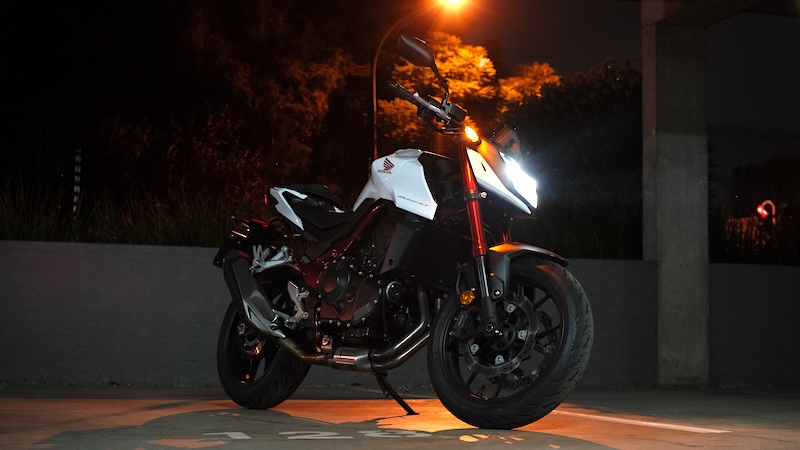
At the end of the day
The Hornet is a worthy contender in this middleweight category, which includes the Yamaha MT-07, Suzuki GSX-8S, and Kawasaki Z900. Honda has built an exciting and tactile machine, with all the features a buyer could reasonably expect. It excels at every aspect of city riding, and is a load of fun when taken out to your nearest set of twisties. And if you live in Joburg, that’s usually a fair distance away.
All in all, it’s a welcome return to the middleweight naked bike market for Honda, and for the Hornet name. It is a bike that has your back, and that makes having fun incredibly easy.
The Honda CB750 Hornet scores 4 out of 5.
4.0 out of 5.0 starsSpecifications of the Honda CB750 Hornet
Price: R170 000
Engine: 755 cc, liquid-cooled, parallel twin with 270-degree crank
Transmission: 6-speed, clutch type
Power: 67.5 kW at 9 500 rpm
Torque: 75 Nm at 7 250 rpm
Weight: 190 kg
Seat height: 795 mm
Ground clearance: 140 mm
ABS: dual channel
Fuel capacity: 15,2 litres
Warranty: 2 years
Maintenance: Service annually or every 12 000 km


